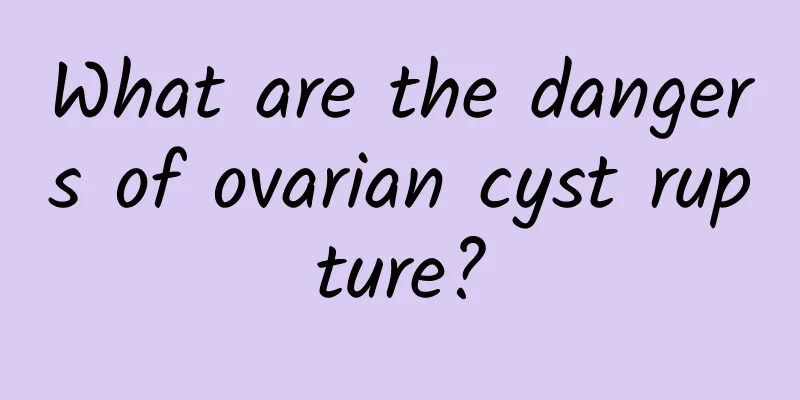What are the dangers of ovarian cyst rupture?

|
What are the dangers of ovarian cyst rupture? Is it serious? Ovarian cyst rupture in women refers to the rupture of the mature ovarian follicle or corpus luteum due to some reason, which causes bleeding. In severe cases, it can cause massive intra-abdominal bleeding, which is ovarian rupture. There are two types: follicle rupture and corpus luteum or corpus luteum cyst rupture. It can occur in both married and unmarried women, and is most common in women of childbearing age. Ovarian rupture occurs more often on the right side and is easily misdiagnosed as acute appendicitis. Acute appendicitis often presents with epigastric pain or fullness, which is gradually limited to the Malpighian point. Nausea and vomiting are more prominent, and tenderness, rebound pain, and abdominal muscle rigidity are more obvious. Bimanual examination: cervical lifting pain and uterine mobility pain are mild, while ovarian cyst rupture is completely the opposite. The symptoms of mild ovarian cyst rupture gradually ease, while acute appendicitis has symptoms and signs of internal bleeding, but not in appendicitis. 1. Acute appendicitis: Ovarian cyst rupture occurs more often on the right side and is easily misdiagnosed as acute appendicitis. Acute appendicitis often presents with epigastric pain or full abdominal pain, which is gradually limited to the Malpighian point. Nausea and vomiting are more prominent, and tenderness, rebound pain and abdominal muscle rigidity are more obvious. Bimanual examination: Cervical lifting pain and uterine mobility pain are mild, while ovarian cyst rupture is completely the opposite. The symptoms of mild ovarian cyst rupture gradually ease, while acute appendicitis has symptoms and signs of internal bleeding, but not in appendicitis. 2. Ruptured tubal pregnancy or miscarriage: Ruptured ovarian cysts are easily misdiagnosed as ruptured tubal pregnancy or miscarriage, but if you carefully inquire about the menstrual history and pay attention to the time when the lesion occurs in the menstrual cycle, you can usually still distinguish them. Tubal pregnancy often has a short-term history of amenorrhea, a small amount of vaginal bleeding, and recurrent abdominal pain. The pelvic cavity is obviously tender and a mass can be felt. Other medical conditions such as a history of infertility are different from ovarian rupture. |
<<: The best treatment for pelvic inflammatory disease
>>: Effective folk remedies for treating habitual miscarriage
Recommend
Most chronic cervicitis is caused by incomplete treatment.
Experts point out that the causes of chronic cerv...
No oil stuck and no "belly" burden! Medicinal and Healthy New Year Dishes
The Spring Festival is coming, and the New Year&#...
What is adnexitis
Adnexitis is very common, but there are still a l...
Is yoga good for premature ovarian failure?
Yoga is a common fitness method that has a strong...
Uterine fibroids small recipe
Uterine fibroids are a common benign tumor of the...
What are the dangers of having an abortion at the age of 18?
As people continue to progress, their thinking is...
Create a slim waist! Experts teach 3 "waist slimming" exercises
A slim waist, a symbol of femininity, is the drea...
Several common precautions after abortion
There are many people who get pregnant unexpected...
Good methods can effectively prevent cervical erosion
Nowadays, many women are concerned about the prob...
How much does it cost to completely cure congenital absence of vagina?
The cost of treating congenital absence of vagina...
Is it easier to lose weight by skipping dinner? 5 major health crises you must know about!
In the evening, delicious dishes were served one ...
Strawberries promote weight loss! 16 capsules per day to supplement arbutin
Strawberry season is here, and no matter adults o...
The main things to note about cervical hypertrophy in daily life
There are many reasons for cervical hypertrophy, ...
How can girls with dysmenorrhea soak their feet to relieve stomach pain? Is soaking feet useful for girls with dysmenorrhea?
Dysmenorrhea is a problem that many girls have to...
Black coffee is used by A-mei and Nicky Wu to lose weight
Wanting to lose weight but too lazy to exercise, ...









